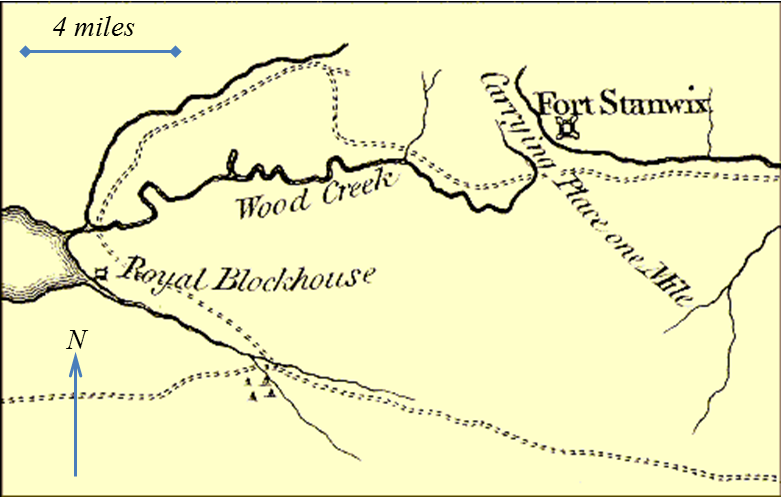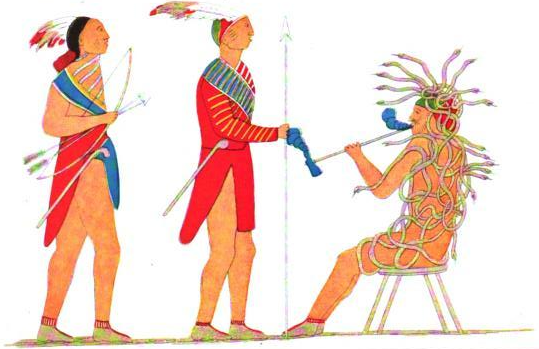|
Oneida Lake
Oneida Lake is the largest lake entirely within New York state, with a surface area of . The lake is located northeast of Syracuse and near the Great Lakes. It feeds the Oneida River, a tributary of the Oswego River, which flows into Lake Ontario. From the earliest times until the opening of the Erie Canal in 1825, the lake was part of an important waterway connecting the Atlantic seaboard of North America to the continental interior. The lake is about long and about wide with an average depth of . The shoreline is about . Portions of six counties and 69 communities are in the watershed. Oneida Creek, which flows past the cities of Oneida and Sherrill, empties into the southeast part of the lake, at South Bay. While not geologically considered one of the Finger Lakes, Oneida Lake, because of its proximity, is referred by some as their "thumb". Because it is shallow, it is warmer than the deeper Finger Lakes in summer and its surface freezes solidly in winter. It is popular ... [...More Info...] [...Related Items...] OR: [Wikipedia] [Google] [Baidu] |
Cicero, New York
Cicero is a town in northern Onondaga County, New York, United States. The population was 31,632 at the 2010 census. The name of the town was assigned by a clerk interested in the classics, honoring Cicero, a Roman statesman. The Town of Cicero is in the central part of New York, north of Syracuse. It is a northern suburb of Syracuse and is located in the northeastern section of Onondaga County. History Cicero was one of the townships of the former Central New York Military Tract, land reserved for soldiers of the American Revolution. The Town of Cicero was formed in 1790 as a Township in the Military Tract, but was part of the Town of Lysander when Onondaga County was formed in 1794 and was separated from Lysander in 1807. The first settler to arrive was John Leach, who established a tavern at Cody's Corners. In 1827 the town was split approximately in half, with the western portion of Cicero becoming the Town of Clay. The Stone Arabia School was listed on the National ... [...More Info...] [...Related Items...] OR: [Wikipedia] [Google] [Baidu] |
Sherrill, New York
Sherrill is a city in Oneida County, New York, United States. With a population of 3,071 (2010 census), it is the state's least populous city. Sherrill is at the western end of the Town of Vernon on Route 5. Sherrill is referred to as ''The Silver City''. History Sherrill was founded in 1916 through a special act of the state legislature and is named in honor of Congressman James S. Sherman's infant son Sherrill Babcock Sherman. It is unique among cities in New York, because its city charter provides that, for many purposes, it is to be treated as if it were still a village located within the town of Vernon. While other cities in New York are not subject to a town's jurisdiction, the Vernon town government continues to have jurisdiction over the territory of the city. In 1997, the Oneida tribe purchased land within the city, eventually initiating a dispute about whether they had to pay taxes. Geography Sherrill is located at , adjacent to the border of Madison County. Accordin ... [...More Info...] [...Related Items...] OR: [Wikipedia] [Google] [Baidu] |
Oneida Carry
The Oneida Carry was an important link in the main 18th century trade route between the Atlantic seaboard of North America and interior of the continent. From Schenectady, near Albany, New York on the Hudson River, cargo would be carried upstream along the Mohawk River using boats known as '' bateaux''. At the location at modern-day Rome, New York, the cargo and boats would be portaged one to four miles overland to Wood Creek. This portage, which the Haudenosaunee called ''De-o-Wain-Sta'', was known as the ''Oneida Carry'' or ''The Great Carrying Place'' in English, and as ''Trow Plat'' in Dutch. After relaunching into Wood Creek (called Kah-ne-go-dick by the Haudenosaunee), the ''bateaux'' would navigate downstream to Oneida Lake, the Oswego River, and ultimately Lake Ontario at Oswego. Lake Ontario was the gateway to all the Great Lakes stretching another thousand miles inland. The only other significant waterway connecting the Atlantic Ocean to the continental interior wa ... [...More Info...] [...Related Items...] OR: [Wikipedia] [Google] [Baidu] |
Mohawk River
The Mohawk River is a U.S. Geological Survey. National Hydrography Dataset high-resolution flowline dataThe National Map accessed October 3, 2011 river in the U.S. state of New York. It is the largest tributary of the Hudson River. The Mohawk flows into the Hudson in Cohoes, New York, a few miles north of the city of Albany.Mohawk River , The Columbia Gazetteer of North America The river is named for the Mohawk Nation of the Iroquois Confederacy. It is a major waterway in north-central New York. The largest tributary, the Schoharie Creek, accounts for over one quarter (26. ... [...More Info...] [...Related Items...] OR: [Wikipedia] [Google] [Baidu] |
Appalachian Mountains
The Appalachian Mountains, often called the Appalachians, (french: Appalaches), are a system of mountains in eastern to northeastern North America. The Appalachians first formed roughly 480 million years ago during the Ordovician Period. They once reached elevations similar to those of the Alps and the Rocky Mountains before experiencing natural erosion. The Appalachian chain is a barrier to east–west travel, as it forms a series of Ridge-and-Valley Appalachians, alternating ridgelines and valleys oriented in opposition to most highways and railroads running east–west. Definitions vary on the precise boundaries of the Appalachians. The United States Geological Survey (USGS) defines the ''Appalachian Highlands'' Physiographic regions of the world, physiographic division as consisting of 13 provinces: the Atlantic Coast Uplands, Eastern Newfoundland Atlantic, Maritime Acadian Highlands, Maritime Plain, Notre Dame and Mégantic Mountains, Western Newfoundland Mountains, Pied ... [...More Info...] [...Related Items...] OR: [Wikipedia] [Google] [Baidu] |
Hudson River
The Hudson River is a river that flows from north to south primarily through eastern New York. It originates in the Adirondack Mountains of Upstate New York and flows southward through the Hudson Valley to the New York Harbor between New York City and Jersey City, eventually draining into the Atlantic Ocean at Lower New York Bay. The river serves as a political boundary between the states of New Jersey and New York at its southern end. Farther north, it marks local boundaries between several New York counties. The lower half of the river is a tidal estuary, deeper than the body of water into which it flows, occupying the Hudson Fjord, an inlet which formed during the most recent period of North American glaciation, estimated at 26,000 to 13,300 years ago. Even as far north as the city of Troy, the flow of the river changes direction with the tides. The Hudson River runs through the Munsee, Lenape, Mohican, Mohawk, and Haudenosaunee homelands. Prior to European ... [...More Info...] [...Related Items...] OR: [Wikipedia] [Google] [Baidu] |
Endonym
An endonym (from Greek: , 'inner' + , 'name'; also known as autonym) is a common, ''native'' name for a geographical place, group of people, individual person, language or dialect, meaning that it is used inside that particular place, group, or linguistic community in question; it is their self-designated name for themselves, their homeland, or their language. An exonym (from Greek: , 'outer' + , 'name'; also known as xenonym) is an established, ''non-native'' name for a geographical place, group of people, individual person, language or dialect, meaning that it is used only outside that particular place, group, or linguistic community. Exonyms exist not only for historico-geographical reasons but also in consideration of difficulties when pronouncing foreign words. For instance, is the endonym for the country that is also known by the exonym ''Germany'' in English, in Spanish and in French. Naming and etymology The terms ''autonym'', ''endonym'', ''exonym'' and ''xen ... [...More Info...] [...Related Items...] OR: [Wikipedia] [Google] [Baidu] |
Iroquois Confederacy
The Iroquois ( or ), officially the Haudenosaunee ( meaning "people of the longhouse"), are an Iroquoian Peoples, Iroquoian-speaking Confederation#Indigenous confederations in North America, confederacy of First Nations in Canada, First Nations peoples in northeast North America/Turtle Island (Native American folklore), Turtle Island. They were known during the Colonial history of the United States, colonial years to the French as the Iroquois League, and later as the Iroquois Confederacy. The English people, English called them the Five Nations, comprising the Mohawk people, Mohawk, Oneida people, Oneida, Onondaga people, Onondaga, Cayuga people, Cayuga, and Seneca people, Seneca (listed geographically from east to west). After 1722, the Iroquoian-speaking Tuscarora people from the southeast were accepted into the confederacy, which became known as the Six Nations. The Confederacy came about as a result of the Great Law of Peace, said to have been composed by The Great Peacem ... [...More Info...] [...Related Items...] OR: [Wikipedia] [Google] [Baidu] |
Iroquois
The Iroquois ( or ), officially the Haudenosaunee ( meaning "people of the longhouse"), are an Iroquoian-speaking confederacy of First Nations peoples in northeast North America/ Turtle Island. They were known during the colonial years to the French as the Iroquois League, and later as the Iroquois Confederacy. The English called them the Five Nations, comprising the Mohawk, Oneida, Onondaga, Cayuga, and Seneca (listed geographically from east to west). After 1722, the Iroquoian-speaking Tuscarora people from the southeast were accepted into the confederacy, which became known as the Six Nations. The Confederacy came about as a result of the Great Law of Peace, said to have been composed by Deganawidah the Great Peacemaker, Hiawatha, and Jigonsaseh the Mother of Nations. For nearly 200 years, the Six Nations/Haudenosaunee Confederacy were a powerful factor in North American colonial policy, with some scholars arguing for the concept of the Middle Ground, in that Eu ... [...More Info...] [...Related Items...] OR: [Wikipedia] [Google] [Baidu] |
Oneida Tribe
The Oneida people ( autonym: Onʌyoteˀa·ká·, Onyota'a:ka, ''the People of the Upright Stone, or standing stone'', ''Thwahrù·nęʼ'' in Tuscarora) are a Native American tribe and First Nations band. They are one of the five founding nations of the Iroquois Confederacy in the area of upstate New York, particularly near the Great Lakes. Originally the Oneida lived in what is now central New York, particularly around Oneida Lake and Oneida County. Today the Oneida have four federally recognized nations: the Oneida Indian Nation in New York, the Oneida Nation in and around Green Bay, Wisconsin, in the United States; and two in Ontario, Canada: Oneida at Six Nations of the Grand River and Oneida Nation of the Thames in Southwold. People of the Standing Stone The name Oneida is derived from the English pronunciation of ''Onyota'a:ka'', the people's name for themselves. ''Onyota'a:ka'' means "People of the Standing Stone". This identity is based on an ancient legend. ... [...More Info...] [...Related Items...] OR: [Wikipedia] [Google] [Baidu] |






